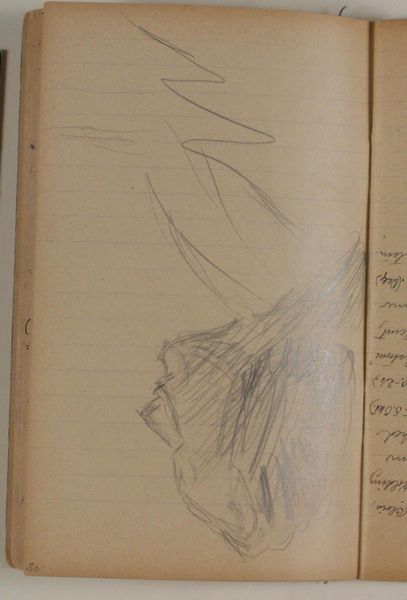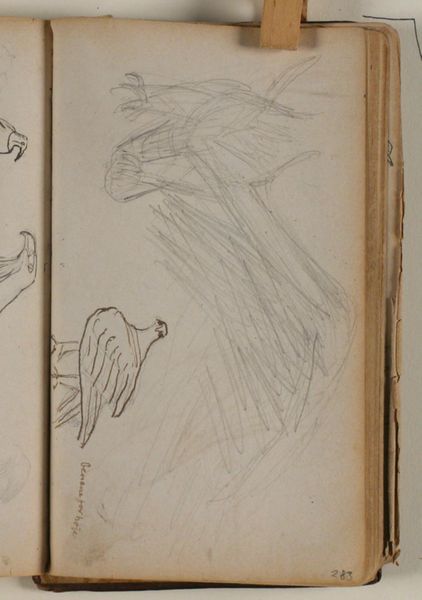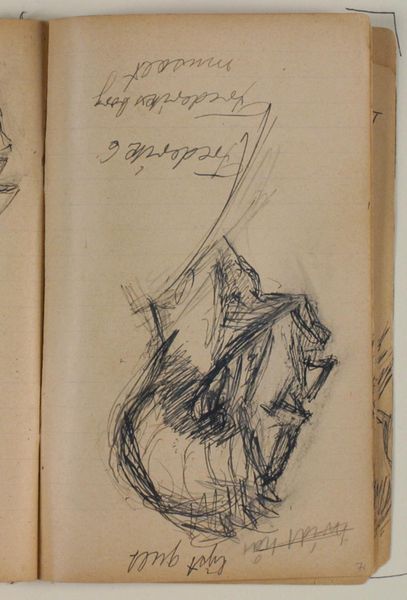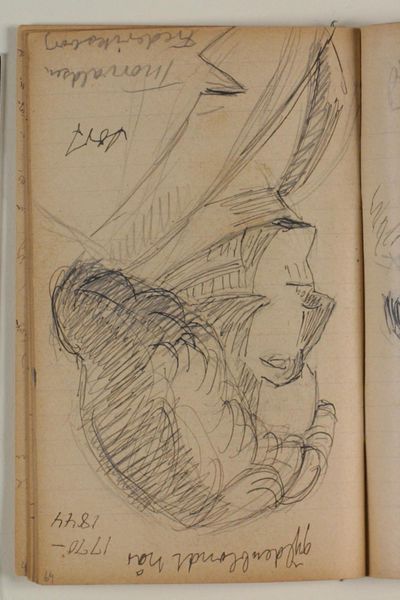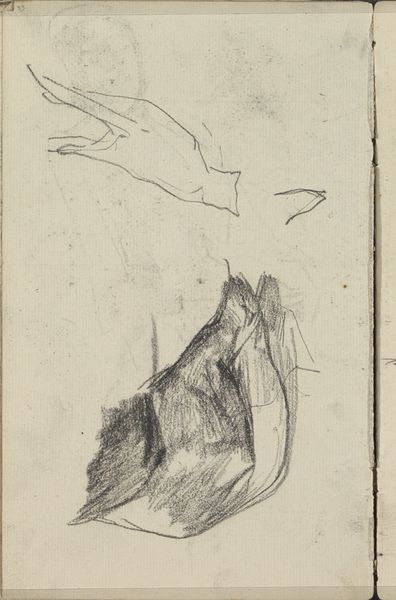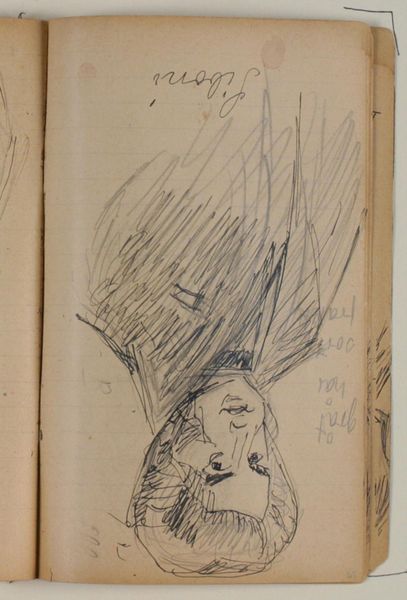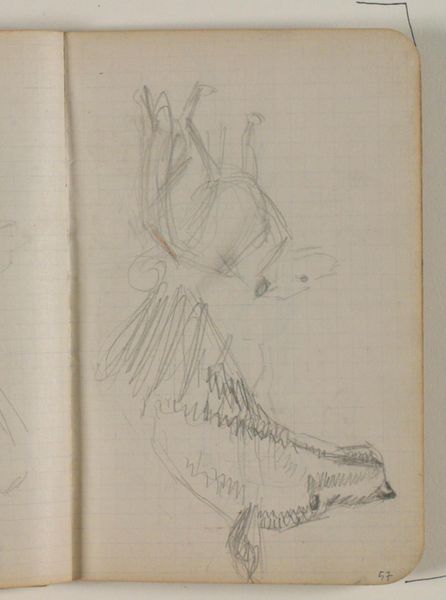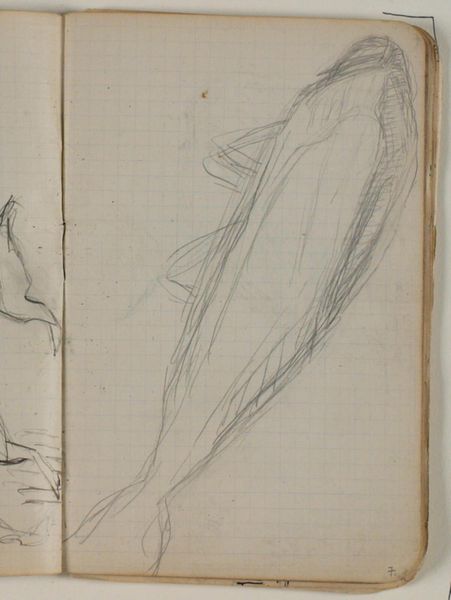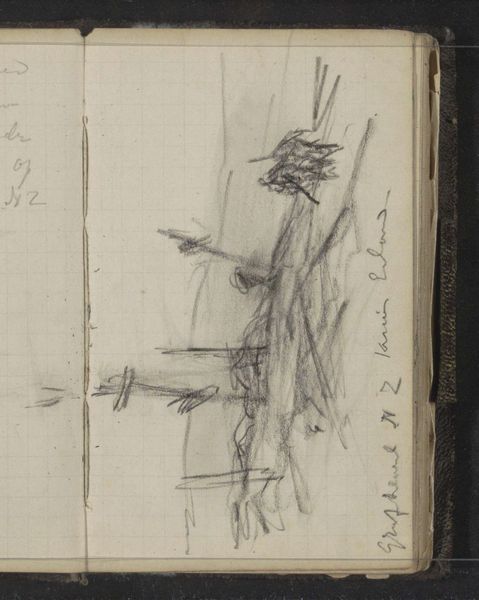
Studie efter August Saabyes H.C. Andersen-skulptur i Kongens Have, København 1930 - 1938
0:00
0:00
drawing, pencil
#
portrait
#
drawing
#
figuration
#
pencil
#
modernism
Editor: Here we have Niels Larsen Stevns' "Study after August Saabye's H.C. Andersen Sculpture in Kongens Have, Copenhagen," dating from around 1930 to 1938. It's a pencil drawing, and it feels very immediate, like a fleeting impression captured in a sketchbook. What strikes you about this piece? Curator: The medium and the support are extremely informative here. Pencil on paper from a sketchbook; we're not looking at a finished presentation piece, but an iterative record. How does the labor of Saabye—the original sculptor—relate to Stevns' practice of reproduction? Is Stevns, in modern fashion, leveling a hierarchical art system? Editor: That’s a really interesting perspective! I hadn’t considered the artistic hierarchy at play. Are you suggesting that Stevns is deliberately blurring the lines between 'high art' and the more casual act of sketching? Curator: Exactly. Consider also the social context. Public sculptures like Saabye’s Andersen became ubiquitous and contributed to the creation of a shared culture; something Stevns interacts with by means of this relatively commonplace object and mode of art making. How is mass culture changing art creation and artistic standing? Editor: So it's not just about depicting the sculpture, but about Stevns's commentary on its place in society and how art is produced and consumed? Curator: Precisely. The pencil itself is an industrially produced object, made available to nearly everyone by capitalist processes, making art less precious. Editor: I never would have thought to interpret it that way! It's fascinating how analyzing the materials can unlock such deeper meanings. Curator: Indeed. Looking closely at the physical processes and socio-economic systems inevitably expands our understanding of an artwork’s cultural value. Editor: This really sheds new light on the whole piece, considering its materials and its production offers a completely different way to appreciate the art. Thank you.
Comments
No comments
Be the first to comment and join the conversation on the ultimate creative platform.
